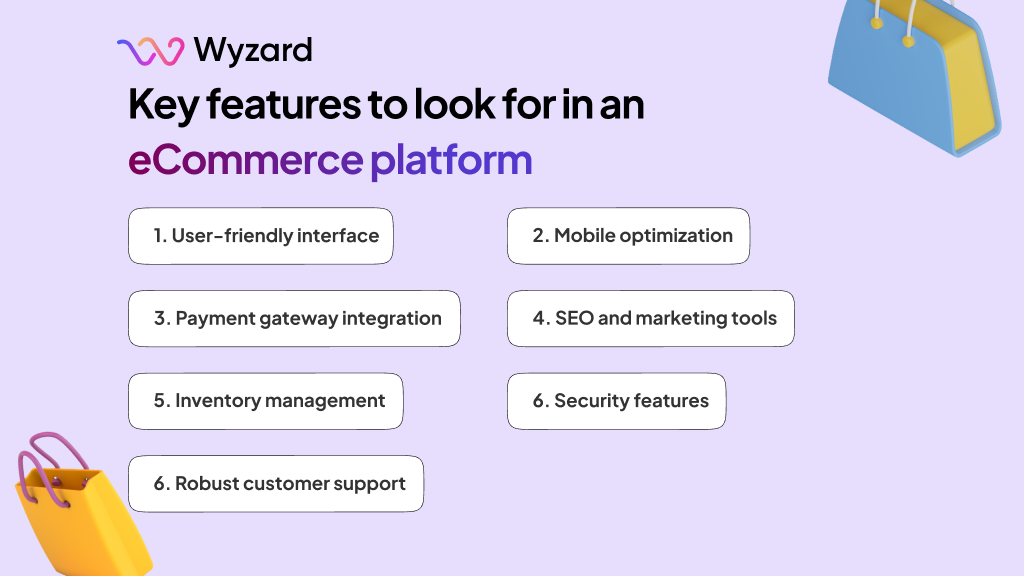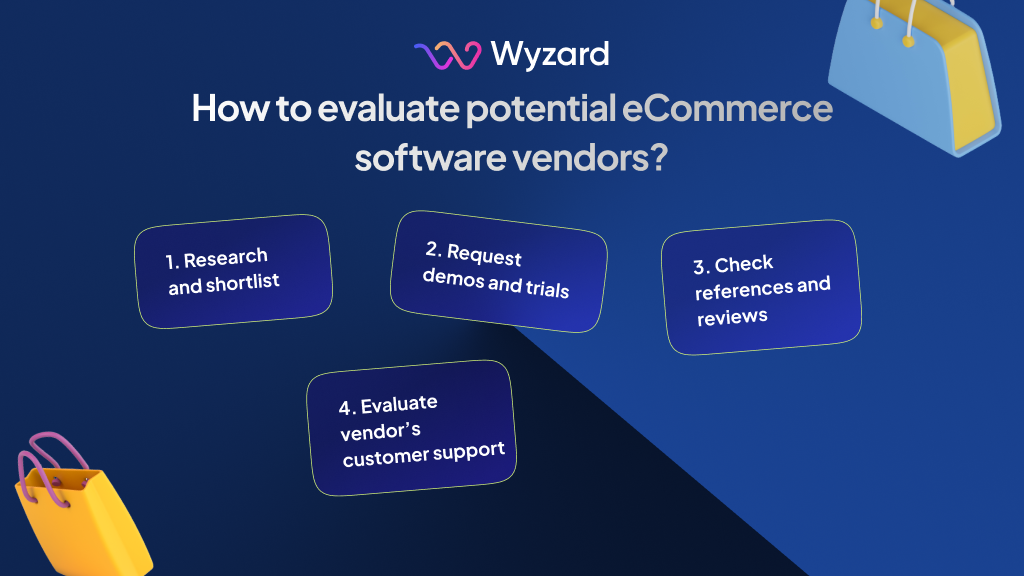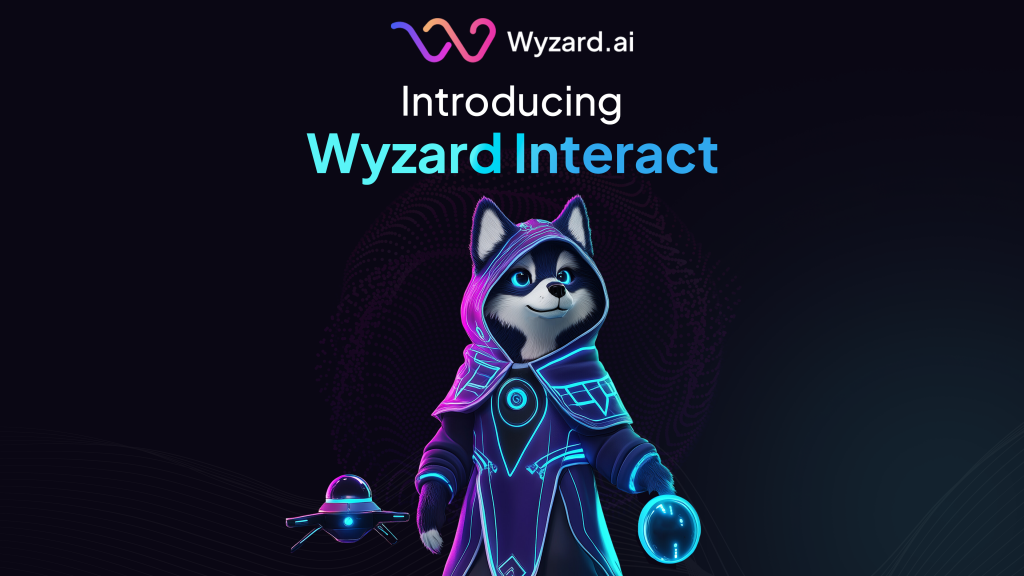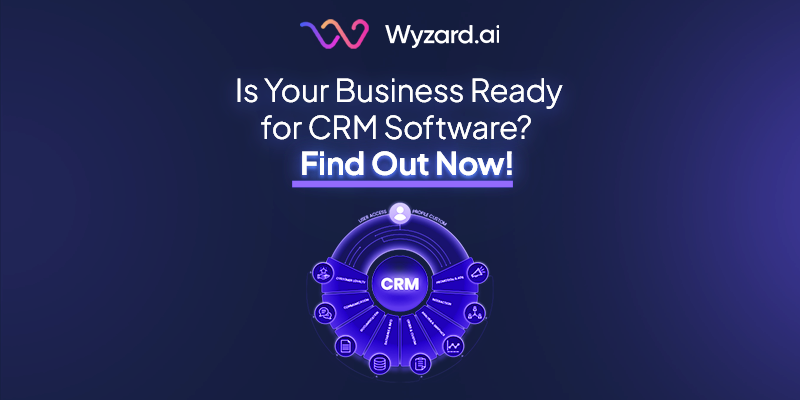Hi, I am Wyzard, your visionary guide in a world where the buying experience is transforming. The way we ...
Software Buying Guide for eCommerce Businesses in India 2024


Subscribe Now
According to Statista, global retail ecommerce sales will surpass $6 trillion for the first time in 2024. But the record-breaking growth doesn’t stop there. By 2025, ecommerce sales will reach over $8 trillion.
With the eCommerce industry peaking, the need for software is inevitable for businesses that want to capitalize on this momentum. This entire industry is based on the internet, making it essential to choose the right software.
The success of eCommerce brands depends significantly on their tech stack and software choices. There are a lot of options to choose from, each offering various features and benefits. Selecting the right eCommerce software can make or break your business, affecting everything from customer experience to operational efficiency.
In this comprehensive buyer’s guide, we’ll discuss the key considerations when choosing eCommerce software. From understanding your business needs to evaluating potential vendors, we’ve got you covered.
Whether you’re a small startup or an established enterprise, this guide is your roadmap to finding the right solution for growth and success. Let’s dive right in!
Understand your business needs before looking for software
The best eCommerce software for your business will depend on your specific needs. Every business is unique, and the right software should align with your goals, model, and challenges.
To make an informed decision, it’s essential to understand your business needs thoroughly.
Here are three key areas to consider:
1. What is your business model?
Your business model significantly influences the type of eCommerce software you should choose. Business-to-business (B2B) platforms often require features like bulk ordering and account management, while Business-to-Consumer (B2C) platforms focus more on customer experience and marketing tools. If your business operates in both spaces, a hybrid solution might be the best fit.
2. What are your goals?
Clearly defining your goals is crucial. Are you aiming to increase sales, improve customer satisfaction, or expand into new markets? Your eCommerce software should support these objectives with features like personalized marketing, seamless checkout processes, and robust analytics to track progress.
3. Assess current pain points
Identify the challenges your business currently faces. Are you struggling with inventory management, customer support, or scalability? Understanding these pain points will help you choose a solution that addresses your specific issues, ensuring smoother operations and better customer experiences.
Types of eCommerce software to choose from
There are different types of eCommerce software available, each providing varying levels of freedom and flexibility to manage your business.
Before choosing software for your eCommerce business, it’s essential to know which type of platform is best for you based on your budget, requirements, and team bandwidth.
Here’s a breakdown of the main types:
1. Hosted vs. self-hosted solutions
| Hosted Solutions | Self-Hosted Solutions |
| These platforms, like Shopify or BigCommerce, are managed by the provider. They handle server maintenance, security, and updates. The pros include ease of use, reliability, and support. However, they can be less flexible and often come with ongoing subscription costs. | Examples include WooCommerce or Magento Open Source. These require you to manage your own server, security, and updates. The benefits are greater control and customization. The downsides are the need for technical expertise and potential higher maintenance costs. |
2. Open Source vs. proprietary software
| Open Source Software | Proprietary Software |
| This type, such as WooCommerce or PrestaShop, offers high flexibility and customization since the source code is accessible. It’s often cost-effective but requires technical skills to manage and customize. | Platforms like Shopify and BigCommerce fall into this category. They provide a ready-to-use solution with regular updates and support. While they are convenient and user-friendly, they may offer limited customization and typically have ongoing costs. |
3. eCommerce SaaS solutions
The SaaS buying trends show more users are moving towards subscription-based SaaS solutions. SaaS platforms like Shopify, BigCommerce, and Wix are subscription-based and hosted by the provider. Benefits include ease of use, scalability, regular updates, and customer support. They are ideal for businesses that want to get up and running quickly without investing heavily in infrastructure or technical expertise.
Key features to look for in an eCommerce platform
When you look at the feature pages of eCommerce software, you’ll end up with a list that is just humanly impossible to compare. Apart from what the software is meant for, here are some of the basic features it must have:

1. User-friendly interface
A clean, intuitive design is crucial for both customers and admin users. It ensures that customers can easily navigate your site and make purchases while admins can manage products, orders, and customer information efficiently.
2. Mobile optimization
If the software integrates with the front end of your eCommerce store, it’s essential to ensure a seamless mobile shopping experience. For example, customers might leave the store without checking out if your payment portal isn’t mobile-optimized. Mobile optimization can significantly impact your conversion rates and customer satisfaction.
3. Payment gateway integration
Talking about payment, your payment gateway must offer multiple payment methods to ensure that your customers can pay using the methods they prefer or feel most secure using. This flexibility can reduce cart abandonment and enhance customer trust.
4. SEO and marketing tools
Look for eCommerce software with built-in features to improve visibility and customer reach. These tools can include SEO enhancements, email marketing integrations, social media integrations, and more, helping you attract and retain customers.
5. Inventory management
Effective inventory management features, such as real-time tracking and automated reordering, are crucial for maintaining stock levels and fulfilling orders promptly. This can help you avoid stockouts and overstock situations, improving overall operational efficiency.
6. Security features
There’s no alternative for security, not just in eCommerce, but for any business in general. Ensure your software includes SSL certificates, data encryption, and PCI compliance to protect customer data and build trust. Robust security measures can prevent data breaches and cyber threats.
7. Robust customer support
The eCommerce software you go for must offer various customer support options. These can be live chat, email, and phone support, allowing you to contact the provider in the way you prefer. This might seem like a small feature, but in a time of crisis, if your eCommerce store is down, you need this to quickly resolve the issue.
Budget considerations when buying eCommerce software
When selecting eCommerce software, budget considerations play a crucial role. Start by accounting for the initial setup costs. These include expenses for domain registration, hosting services, website design, and development work.
Next, factor in ongoing costs such as subscription fees for SaaS platforms, transaction fees per sale, and regular maintenance to keep the eCommerce store running smoothly.
Additionally, be aware of hidden costs that may arise. Customization to tailor the software to your specific needs can be pricey, as can purchasing plugins or extensions to add functionality. Integration with third-party services, like marketing tools or shipping providers, might also incur extra charges.
By thoroughly evaluating these financial aspects, you can choose a solution that fits your budget while meeting your business needs.
Evaluating potential eCommerce software vendors
You can’t just Google a software’s name and buy it for your eCommerce business. That’s not how you achieve profitability. You must do some research before going with an eCommerce software vendor.

1. Research and shortlist
Start by researching and creating a shortlist of potential vendors. Look for vendors with a strong market presence and a good reputation. Consider factors like the size of their customer base, the range of features they offer, and their overall stability in the market. Explore online reviews, industry reports, and expert opinions to compile a list of reliable vendors.
2. Request demos and trials
Once you have a shortlist, request demos and trials. This hands-on experience is invaluable. It allows you to see the software in action and assess its ease of use, functionality, and compatibility with your business needs. Pay attention to the user interface and how intuitive it is for both customers and admin users. During the demo, test key features and see how they perform under real-world scenarios.
3. Check references and reviews
Gather feedback from current users by checking references and reading reviews. Look for common themes in the feedback, such as reliability, ease of integration, and customer support quality. User reviews can provide insights into the software’s strengths and potential drawbacks. Reach out to other businesses in your network who use the software and ask about their experiences.
4. Evaluate their customer support
Evaluating customer support is also crucial. Test the responsiveness and helpfulness of the support team by reaching out with questions or issues. Good customer support can significantly impact your experience with the software, especially during the initial setup and troubleshooting phases. Reliable support ensures that any problems are quickly addressed, minimizing disruptions to your business operations. Look for vendors offering multiple support channels like live chat, email, and phone support.
Implementation and integration of eCommerce software
Implementing new eCommerce software involves a detailed migration plan. Transitioning from your existing systems requires careful planning to ensure data accuracy and minimal downtime.
Evaluate the compatibility of the new software with your current CRM, ERP, and marketing tools. This ensures seamless integration and efficient workflows.
Training and onboarding are equally important. Providing your team with thorough training ensures they are well-prepared to use the new software effectively. This step helps maximize the software’s potential and minimize disruptions during the transition period.
Post-purchase considerations for eCommerce software
After purchasing your eCommerce software, ongoing attention is crucial. Regular updates and upgrades keep the software current, enhancing security and adding new features. Monitoring performance through analytics helps you measure success and identify areas for improvement. Track key metrics like sales, conversion rates, and customer behavior. Collecting customer feedback is also essential. Continuously improve based on their input to enhance the user experience and meet their evolving needs. This proactive approach ensures that your eCommerce platform remains effective and aligned with your business goals, driving sustained growth and customer satisfaction.
Buy the best eCommerce business software with Wyzard
Buying the right software for your eCommerce business is not easy. If anything, it’s complex and exhausting. However, you can simplify the process by following the steps covered in this eCommerce software buying guide.
However, the most efficient and cost-effective way to buy eCommerce software is via a SaaS procurement platform like Wyzard. It does all the heavy lifting for you — from identifying the right vendors to negotiating the best prices for you.
Moreover, with Wyzard, you can also manage the software you buy to save more!
Buy your eCommerce software with Wyzard — Book a demo today!
Other blogs
The latest industry news, interviews, technologies, and resources.
March 17, 2025
How LLM-Based AI Agents are Simplifying the Software Buying Process for Businesses
Let’s talk about something that’s becoming a game-changer in our daily lives: AI agents. Think of them as your ...

March 11, 2025
Is Your Business Ready for CRM Software? Find Out Now!
Running a small business can feel like juggling a million things at once. You are busy with customers, ensuring ...

Subscribe
Today!
Error: Contact form not found.
Subscribe to learn about new product features, the latest in technology, solutions, and updates.
 Meet Us at
Meet Us at 



